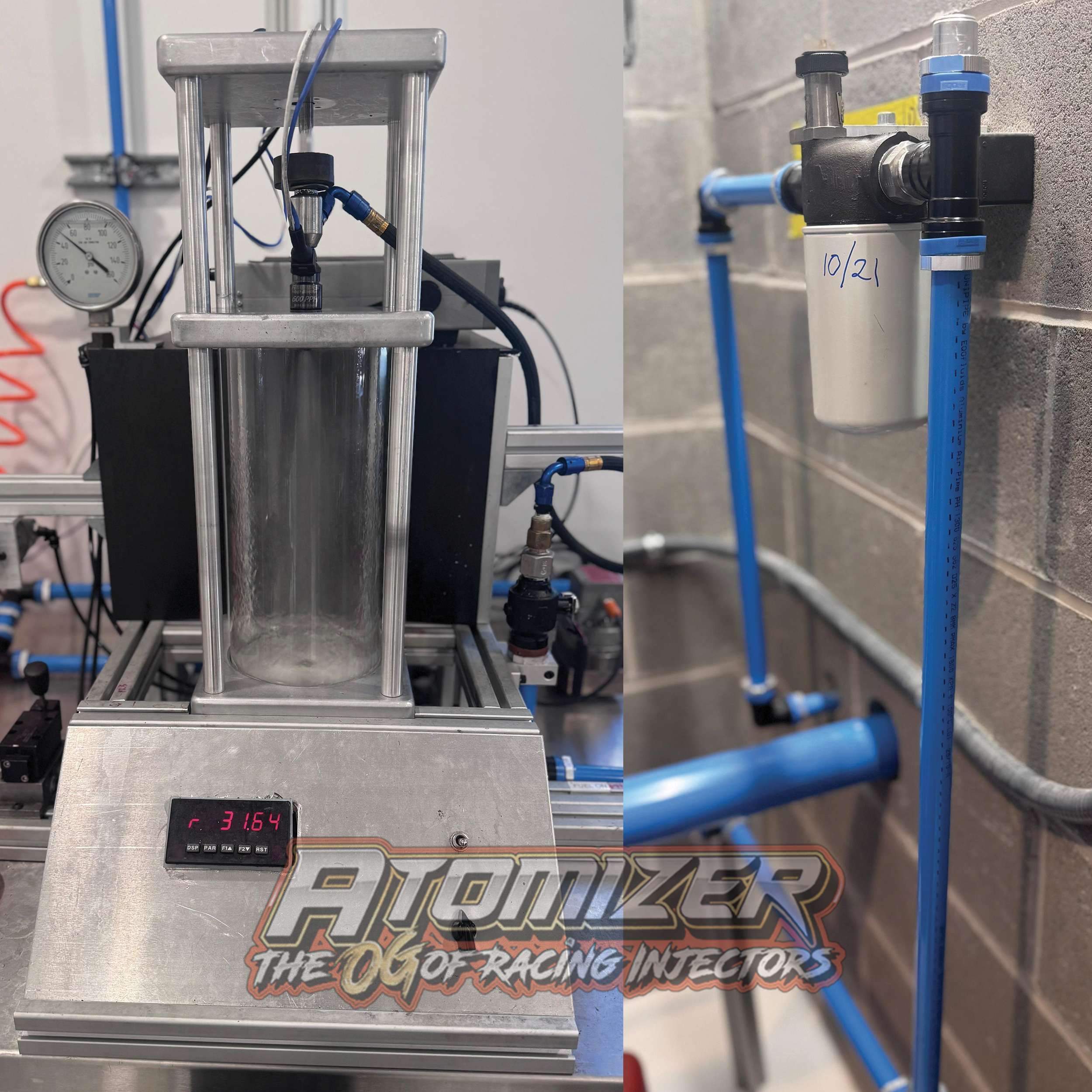DIY Flowing Atomizer Injectors the Right Way
When it comes to Atomizer fuel injectors, precision isn’t optional — it’s everything. Many experienced tuners and racers choose to bench-test or flow their injectors in-house, but few realize how easy it is to skew the results without following proper standards. Whether you’re troubleshooting a cylinder imbalance or documenting flow data for a new setup, here’s what you need to know to get accurate readings every time.
Filter Contamination Kills Accuracy
Before anything else, check your bench setup for contamination. Even microscopic particulates can compromise solenoid operation, alter spray patterns, or give you false flow data. Filter your test fluid down to at least 10 microns— 5 microns is ideal and matches the standard used during Atomizer’s manufacturing and verification process. Always inspect and replace filters regularly, especially if you’re reusing calibration fluid from previous tests.
The Right Test Fluid Matters
Many builders make the mistake of using general-purpose mineral spirits or similar solvents for test fluid. These do not match the specific gravity or viscosity of methanol — which means your flow numbers will be inaccurate and inconsistent across pulse ranges. The proper test fluid is N-Heptane, the recognized OEM industry standard for injector calibration. N-Heptane mimics methanol’s physical properties and provides repeatable results under controlled conditions.
Correct Electrical Setup: Voltage and Driver Current
Injector performance depends heavily on your electrical setup. Use a 16-volt supply during flow testing, which mirrors real-world racing system voltage. Equally important, your driver current should be configured for 8 amps peak and 2 amps hold current. Using the wrong current profile will alter the injector’s opening and closing characteristics, leading to misleading flow data.
Documentation and Verification
Atomizer Fuel Systems capture detailed verification data with every injector — even down to video proof of each unit during leak-down testing, labeled by serial number. This provides a reliable baseline that you can reference against your own test results. If you see large discrepancies, contamination or setup differences are most likely to blame.
DIY injector flow testing can be incredibly valuable for advanced builders and tuners, but only if it’s done to professional standards. Proper filtration, calibration fluid, voltage, and driver current separate real data from guesswork. Follow these guidelines and your flow numbers will align much more closely with the manufacturer’s verified performance — ensuring your tune and fuel delivery are spot-on at the track.



